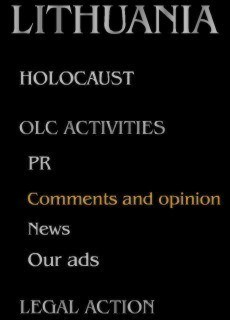|
History is not only about the past, but a critical subject for the present and future.
These are days in which the theme of memory is at its strongest in the Jewish calendar. Starting on Passover and the retelling of the story of the Exodus from Egypt, and continuing to Holocaust Remembrance Day and then to Remembrance Day for the Fallen of Israel’s Wars and the victims of terror here and abroad, the imperative of zachor “remember” echoes and reechoes. It reminds us time and again of the importance of studying the trials, tribulations and triumphs of our history in order to spare us from danger and motivate us to take whatever measures are necessary to avoid future disasters. In that respect, history is not only about the past, but a critical subject for the present and future.
This week, that connection was reinforced before Holocaust Remembrance Day, not only by the fatal terrorist attack on a synagogue in Poway, California, but also on the pages of the international edition of the New York Times, which featured a disgusting antisemitic cartoon depicting President Donald Trump as a blind Jew being led by a guide dog in the image of Prime Minister Benjamin Netanyahu. Given the obvious connection between blatant antisemitism and lethal attacks on Jews, the imperative of memory remains as powerful as ever.
Memory, however, can be a tricky assignment, especially in the wrong hands. And if, for decades, the history of the Holocaust has been abused by deniers, we now face a relatively new threat in Eastern Europe: those who do not deny the Holocaust, but attempt to hide the culpability of their own nationals, deny the uniqueness of the Holocaust by promoting the canard of equivalency between Nazi and Communist crimes, and glorify heroes of the postwar anti-Soviet resistance, even if they were active participants in the mass murder of their fellow Jewish citizens.
Under these difficult circumstances, I believe that it is important, especially this week, to point to two encouraging events which took place over the course of the past two years that give us hope the truth will ultimately prevail in the fight to ensure the accuracy of the narrative of the Holocaust. The first took place in Finland, a country noted for the fact that despite fighting with Nazi Germany against the Soviet Union, it protected its Jewish community from the Nazis’ demand to send Finnish Jews to the death camps. There were, however, other elements to the story which were negative, and had been revealed by Finnish researcher Elina Sana many years after the end of World War II. The Finnish authorities had deported eight stateless Jewish refugees to Auschwitz via Estonia, and had handed over dozens of Soviet Jewish prisoners of war to the Germans who then murdered them.
THAT WAS the accepted narrative until a year-and-a-half ago, when Prof. André Swanström discovered a letter from a Finnish SS volunteer serving with the Waffen-SS in Ukraine in the summer of 1941. The letter indicated that Finnish volunteers had taken part in the murder of Jews. Up to this point, there had never been any indication of Finnish participation in Holocaust crimes, and the role played by the 1,408 Finns who had volunteered to serve in Waffen-SS units had never been thoroughly researched.
To Finland’s credit, when they were requested to investigate this new information by the Wiesenthal Center, they did not ignore the request or sweep the issue under the carpet. A top-flight group of professors and researchers, headed by Finnish National Archives director-general Jussi Nuorteva was commissioned to research the issue after Finnish President Sauli Niinistö agreed to our request.
The investigation took place over almost a year and archives in many different countries were consulted. The result was a 248-page summary by historian Lars Westerlund titled “The Finnish SS Volunteers and Atrocities against Jews, Civilians and Prisoners of War in Ukraine and the Caucasus Region in 1941-1943.” It confirmed “several cases in which the Finnish SS-volunteers engaged in violent acts against civilians and Jews.” Needless to say, this was an additional stain on Finland’s record during World War II, but the authorities realized the importance of historical truth and ensured full exposure, a very praiseworthy stance.
Another case is that of Silvia Foti, a Chicago schoolteacher and the granddaughter of Lithuanian national hero Jonas Noreika, whose role in the postwar anti-Soviet resistance has earned him national acclaim since Lithuania regained its independence in 1990. A school was named for him in his birthplace, and a plaque in his memory adorns the façade of the Lithuanian Academy of Sciences, where he worked until his arrest by the Soviets. Foti started writing a book about Noreika, assuming that he was indeed a great hero, but her research ultimately discovered that during the Holocaust he had played a major role in the persecution and murder of thousands of Jews in northwestern Lithuania, where he was the Lithuanian liaison with the Nazis. Instead of abandoning her project, she decided to reveal the truth about her grandfather, and has joined the efforts to convince the Lithuanian authorities to cancel all the honors bestowed on Norieka, thereby earning the enmity of many Lithuanians and Lithuanian-Americans.
These two examples of the efforts to reveal the historical truth about Holocaust crimes, one by a government and one by an individual, are extremely important because they prove that it is possible to combat the lies of distortion, just as we have in many cases defeated those who deny the Holocaust. The key to such victories, as we see in these two cases, is cooperation between local governments willing to face the truth, and/or local individuals of those of the same ethnicity and international Jewish organizations.
jpost.com
| 

